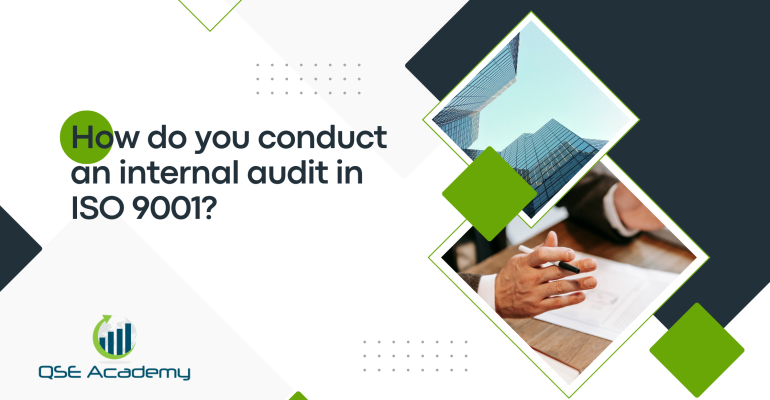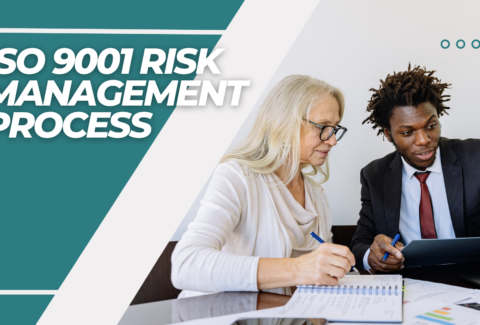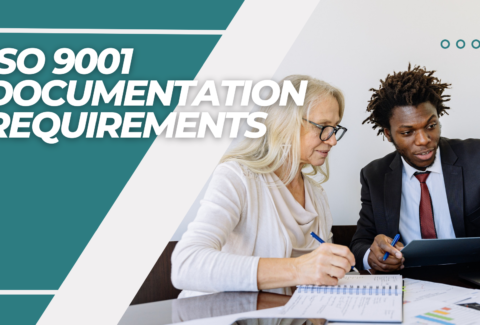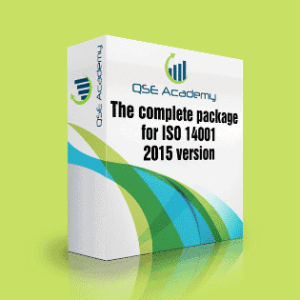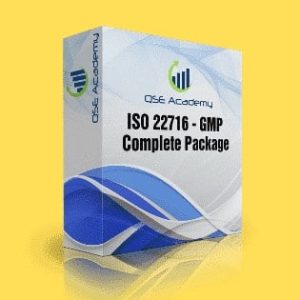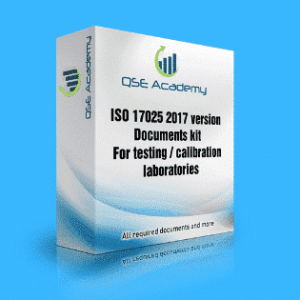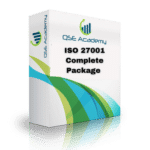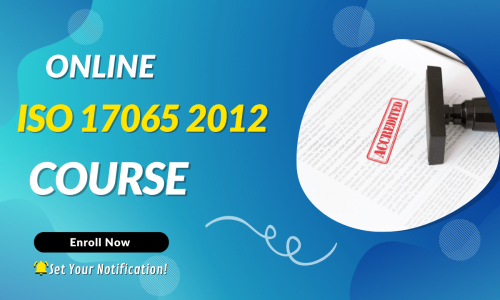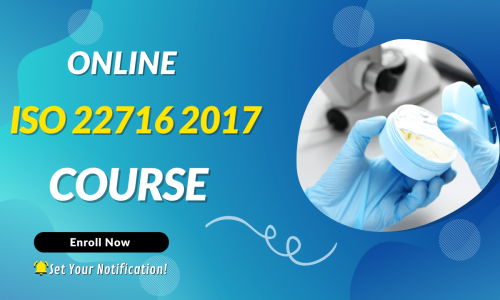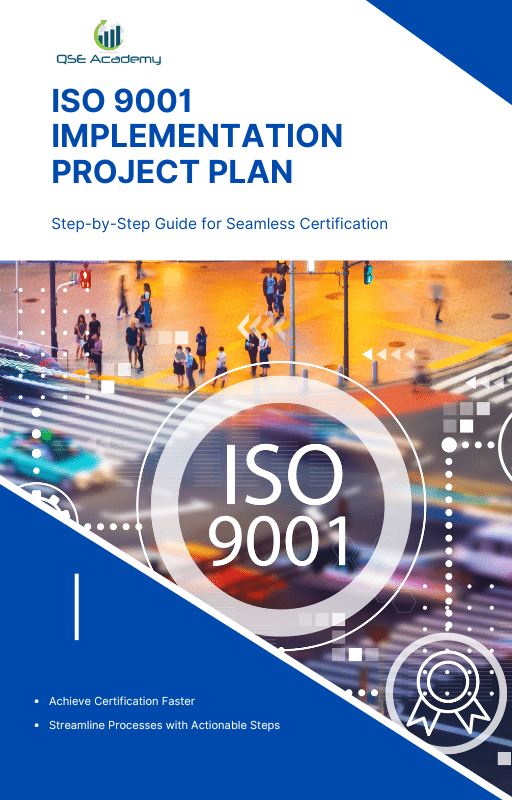How do you conduct an internal audit in ISO 9001?
How do you conduct an internal audit in ISO 9001?
Let’s talk about internal audits. They might sound intimidating at first, but they’re actually one of the most important tools for keeping your business on track—especially if you’re working with ISO 9001. So, what does it really mean to conduct ISO 9001 internal audit activities, and why does it matter so much?
Internal audits are like your business’s regular health check-ups. They help you evaluate whether your quality management system (QMS) is working as it should, meeting ISO 9001 requirements, and supporting your overall goals. But it’s not just about compliance—it’s about finding opportunities to improve, streamline processes, and deliver better results to your customers.
In this guide, we’ll walk through everything you need to know about how to effectively conduct ISO 9001 internal audit processes. From planning the audit to following up on findings, we’ll break it down into simple, actionable steps. By the end, you’ll see how internal audits are less about ticking boxes and more about driving continuous improvement. Ready? Let’s get started!
What is an Internal Audit in ISO 9001?
Before diving into how to conduct ISO 9001 internal audit processes, let’s first understand what an internal audit is and why it’s so important. Think of an internal audit as a way to check if your quality management system (QMS) is doing what it’s supposed to do. It’s like stepping back to evaluate your business processes and make sure they align with the ISO 9001 standard.
The purpose of an internal audit is twofold. First, it ensures that your QMS meets ISO 9001 requirements. Second, it helps identify opportunities to improve how your business operates. The ultimate goal is to ensure your organization consistently delivers high-quality products or services while meeting customer expectations.
So, why is this step crucial? Internal audits are a cornerstone of ISO 9001 because they focus on continuous improvement—a key principle of the standard. When you conduct ISO 9001 internal audit activities, you’re not just assessing compliance; you’re also uncovering ways to make your business more efficient, effective, and customer-focused.
It’s worth noting that an internal audit isn’t about finding fault or pointing fingers. Instead, it’s a constructive process that helps your team work smarter, not harder. It’s all about ensuring that your processes are well-documented, your employees are on the same page, and your organization is operating at its best.
By regularly conducting internal audits, you’re essentially setting your business up for long-term success. And as we’ll explore in the next sections, learning how to conduct ISO 9001 internal audit processes effectively is easier than you might think. With the right approach and mindset, audits can become a powerful tool for driving meaningful improvements.
Preparing to Conduct ISO 9001 Internal Audit
When it comes to internal audits, preparation is everything. If you skip the prep work, it’s easy to miss important details or end up with a disorganized process. But don’t worry—with a little planning, you can set yourself up for success. Here’s how to prepare effectively to conduct ISO 9001 internal audit activities.
Step 1: Establish an Audit Plan
First things first, you need a plan. An audit plan serves as your roadmap, outlining what will be audited, when it will happen, and who will be involved. The scope of the audit might focus on a specific process, department, or even the entire quality management system (QMS).
When creating your audit plan, think about these questions:
- What areas or processes need to be reviewed?
- What are the key ISO 9001 requirements you need to check?
- How often should internal audits be conducted?
Your audit plan should also include a timeline, so everyone knows what to expect. By having a clear plan in place, you’ll make the process smoother and more efficient when it’s time to conduct ISO 9001 internal audit tasks.
Step 2: Select the Right Auditors
Choosing the right people to conduct the audit is just as important as the audit itself. Ideally, auditors should be trained in audit techniques and have a solid understanding of ISO 9001. They also need to be impartial, meaning they shouldn’t audit processes they’re directly involved in.
For smaller businesses, finding independent auditors within the team can be challenging, but it’s worth the effort. If needed, you can even bring in external consultants for a fresh perspective. No matter who conducts the audit, the goal is to ensure the process is objective and thorough.
Step 3: Define the Scope and Objectives
To stay focused, it’s important to define the scope and objectives of the audit before you start. The scope outlines the specific areas or processes you’ll be auditing, while the objectives clarify what you’re trying to achieve.
For example, your objective might be to verify compliance with ISO 9001 requirements, ensure processes are being followed, or identify areas for improvement. When you define clear objectives, it’s easier to stay on track and achieve meaningful results as you conduct ISO 9001 internal audit activities.
Step 4: Gather and Review Documentation
Before jumping into the audit, spend some time reviewing your organization’s QMS documentation. This includes policies, procedures, records, and previous audit reports. Why is this step important? It helps you understand how processes are supposed to work, so you can evaluate whether they’re being followed effectively.
By getting familiar with your documentation, you’ll have a solid foundation to build on when it’s time to conduct ISO 9001 internal audit reviews in practice.
Preparation might feel like extra work upfront, but it’s the key to running a smooth and successful internal audit. With a solid plan, the right team, and a clear focus, you’ll be ready to dive into the next stage: conducting the audit itself. Let’s get to it!
Conducting the ISO 9001 Internal Audit
Now that you’ve done the prep work, it’s time to roll up your sleeves and get started. Conducting the actual audit might seem overwhelming at first, but with a clear plan and the right mindset, it can be a smooth and even rewarding process. Here’s how to conduct ISO 9001 internal audit activities step by step.
Step 1: Review the Documentation
Before you dive into the operational side, start by double-checking the documentation for the area or process you’re auditing. This includes policies, procedures, work instructions, and any relevant records. Your goal is to ensure that what’s written on paper aligns with the requirements of ISO 9001.
By reviewing the documentation thoroughly, you’ll have a better understanding of how things should work—and you’ll be able to spot gaps or inconsistencies more easily as you conduct ISO 9001 internal audit tasks.
Step 2: Observe Processes in Action
Next, it’s time to see how things are working in practice. This is often referred to as the “on-site audit” phase, and it’s where you’ll gather evidence to evaluate whether your processes are being followed correctly.
Here’s how to approach it:
- Observe workflows: Watch how tasks are carried out and compare them to the documented procedures.
- Interview employees: Ask open-ended questions to understand how they perform their tasks and whether they’re aware of relevant policies.
- Examine records: Look at logs, reports, and other documentation that demonstrates compliance with ISO 9001 requirements.
While you’re gathering evidence, focus on creating a collaborative and non-confrontational atmosphere. The purpose of the audit isn’t to assign blame—it’s to identify opportunities for improvement.
Step 3: Record Your Findings
As you collect evidence, make sure you document everything—both the good and the bad. Recording compliance is just as important as identifying non-conformities because it shows where your QMS is working well.
When you find areas that don’t meet ISO 9001 requirements, take detailed notes about what’s missing or not functioning as intended. These non-conformities will form the basis for corrective actions later on. A good internal audit doesn’t just stop at identifying issues; it also highlights strengths that can be replicated across the organization.
Step 4: Focus on Objective Evidence
Throughout the audit, it’s crucial to rely on objective evidence rather than assumptions or personal opinions. This means basing your findings on verifiable facts—like records, observed actions, or employee statements.
For example, if you discover that a process isn’t being followed as documented, note the specific steps that are missing and the impact this has on the overall system. Staying objective ensures your audit findings are accurate and actionable as you conduct ISO 9001 internal audit activities.
Step 5: Keep Communication Open
During the audit, maintain open and respectful communication with employees. Let them know the purpose of the audit is to help improve processes, not to criticize their work. When people feel comfortable, they’re more likely to provide honest and helpful input that can make the audit more effective.
By following these steps, you’ll conduct a thorough and meaningful internal audit that provides real value to your organization. And remember, the goal of every internal audit isn’t just compliance—it’s continuous improvement. Once the audit is complete, it’s time to move on to the next phase: reporting and taking action on your findings. Let’s explore that next!
Post-Audit Activities: What Comes After You Conduct ISO 9001 Internal Audit?
Congratulations! You’ve completed your internal audit. But don’t stop there—the post-audit phase is where the real magic happens. After you conduct ISO 9001 internal audit activities, the focus shifts to analyzing the results, implementing corrective actions, and ensuring improvements stick. Let’s walk through the key steps.
Step 1: Create an Audit Report
The first thing you’ll want to do is put together an audit report. Think of this as the summary of everything you observed during the audit. It should include:
- Areas that are compliant with ISO 9001.
- Any non-conformities you identified.
- Opportunities for improvement.
Make sure your report is clear, concise, and easy for everyone to understand. The goal is to provide actionable insights, not overwhelm your team with technical jargon. A well-crafted report will guide your organization on what to do next after you conduct ISO 9001 internal audit processes.
Step 2: Present Findings to Management
Once your report is ready, share the results with your management team. This step is crucial because leadership needs to understand what’s working and what needs attention. Highlight the key points:
- What’s going well?
- Where are the gaps?
- What actions are needed to address those gaps?
This discussion should be a collaborative effort, with management providing input on prioritizing corrective actions and allocating resources. When leadership is on board, it’s much easier to drive meaningful change.
Step 3: Implement Corrective Actions
Identifying non-conformities is only half the job—now it’s time to fix them. Corrective actions are the steps your organization takes to address the issues found during the audit.
Here’s how to approach this step:
- Determine the root cause: Don’t just treat the symptoms. Dig deeper to find out why the non-conformity happened in the first place.
- Develop an action plan: Outline what needs to be done, who’s responsible, and when it will be completed.
- Track progress: Monitor the implementation of corrective actions to ensure they’re effective.
By focusing on corrective actions, you’re not just resolving individual issues—you’re strengthening your entire quality management system. This is one of the most important outcomes when you conduct ISO 9001 internal audit processes.
Step 4: Follow Up and Verify Changes
After implementing corrective actions, it’s essential to follow up and verify that the changes are working. This might involve:
- Conducting a follow-up audit to review the corrected processes.
- Gathering feedback from employees to see if the changes have improved workflows.
- Checking for measurable improvements, such as fewer errors or faster turnaround times.
Verification ensures that your efforts have made a real impact and that the same issues won’t pop up again in the future.
Step 5: Reflect and Plan for the Future
Every audit is a learning opportunity. Once you’ve wrapped up your corrective actions, take some time to reflect on the process:
- What went well during the audit?
- What could be improved for next time?
- Are there any trends or recurring issues that need extra attention?
Use these insights to make your future internal audits even more effective. When you conduct ISO 9001 internal audit activities regularly, you’re not just checking a box—you’re building a culture of continuous improvement that benefits everyone.
By following these post-audit steps, you’ll maximize the value of your internal audits and set your organization up for success. Remember, an audit isn’t just about finding problems; it’s about turning those insights into meaningful action. And when you approach it this way, every internal audit becomes a step forward for your business.
Best Practices for Conducting ISO 9001 Internal Audit
By now, you know the steps to conduct ISO 9001 internal audit activities effectively. But like anything in life, there are ways to make the process smoother, more impactful, and less stressful. Let’s explore some best practices that can take your internal audits to the next level.
1. Keep Communication Open
A successful audit starts with clear and open communication. Let everyone in your organization know when the audit is happening, why it’s important, and what to expect. When employees understand that the goal is improvement—not blame—they’ll feel more comfortable sharing insights and cooperating during the process.
During the audit itself, maintain a friendly and collaborative tone. This isn’t a courtroom—it’s a chance to learn and grow. Open communication ensures that everyone sees the audit as a positive experience.
2. Focus on Processes, Not People
One of the most important things to remember when you conduct ISO 9001 internal audit activities is that it’s about the processes, not the individuals. If a process isn’t working as intended, it’s an opportunity to improve the system—not to assign blame to a specific person.
By focusing on how things can be improved at the system level, you’ll create a culture of trust and collaboration. Employees will feel empowered to share their feedback without fear of being singled out.
3. Stick to the Scope and Objectives
It can be tempting to go off on tangents during an audit, especially if you notice something interesting. But sticking to the scope and objectives you defined during the planning phase will keep the process focused and efficient.
For example, if the audit’s objective is to evaluate compliance with ISO 9001’s document control requirements, avoid diving into unrelated areas. Staying focused ensures that you thoroughly address the intended areas without getting overwhelmed or sidetracked.
4. Use Checklists as a Guide
When you conduct ISO 9001 internal audit activities, a well-designed checklist can be your best friend. It keeps you organized, ensures you don’t miss any key requirements, and provides a consistent structure for your audit.
However, don’t let the checklist limit your ability to dig deeper. Think of it as a guide, not a rigid rulebook. Use it to cover the essentials, but remain flexible enough to explore areas that may need more attention.
5. Look for Opportunities, Not Just Non-Conformities
While identifying non-conformities is a critical part of any audit, don’t forget to celebrate what’s working well. Highlighting successes and areas of strength can be just as valuable as pointing out gaps.
By recognizing what your organization is doing right, you can reinforce good practices and build momentum for further improvements. Plus, it boosts morale and reminds your team that audits are about growth, not just finding faults.
6. Stay Objective and Fact-Based
When documenting your findings, stick to the facts. Use objective evidence—such as records, observed activities, or employee interviews—to support your conclusions. Avoid assumptions or vague statements, as these can lead to confusion and make it harder to implement corrective actions.
For example, instead of saying, “This process doesn’t seem effective,” document specific evidence: “The process does not include steps for verifying customer feedback, as outlined in the QMS documentation.” Staying fact-based ensures clarity and credibility.
7. Continuously Improve Your Audit Process
Every time you conduct ISO 9001 internal audit activities, there’s an opportunity to refine your approach. After each audit, take time to review what worked well and what could be improved. Did you encounter any challenges? Were there any areas where your audit plan could be more detailed?
Use these reflections to improve your future audits. By continuously enhancing your audit process, you’ll get better results over time.
Internal audits might feel like a lot of work at first, but they’re a powerful tool for driving growth and improvement in your organization. By following these best practices, you’ll ensure that every time you conduct ISO 9001 internal audit tasks, the process is smooth, efficient, and truly beneficial for your business. Remember, audits aren’t just about compliance—they’re about creating a stronger, more successful organization. And that’s something everyone can get behind!
Conclusion: Why Internal Audits are Essential to ISO 9001 Success
So, what’s the takeaway when it comes to learning how to conduct ISO 9001 internal audit activities? Internal audits aren’t just a requirement of the ISO 9001 standard—they’re a critical tool for ensuring your quality management system (QMS) is effective, efficient, and continuously improving.
By conducting regular internal audits, you’re doing more than checking boxes for compliance. You’re identifying strengths, uncovering gaps, and finding opportunities to make your business better. And the best part? It’s all within your control. You’re driving the improvements that will help your organization grow, build trust with customers, and deliver consistent quality.
When you conduct ISO 9001 internal audit processes the right way, it’s not about pointing fingers or creating unnecessary stress. Instead, it’s about fostering collaboration, promoting transparency, and using facts to guide meaningful change. With careful planning, objective evaluations, and actionable follow-ups, internal audits can become one of the most valuable tools in your business toolkit.
So, whether you’re conducting your first internal audit or refining an established process, remember this: internal audits are a stepping stone to success. They’re how you stay aligned with ISO 9001 principles, ensure customer satisfaction, and create a culture of continuous improvement.
Now it’s your turn to put what you’ve learned into action. Start with a solid plan, communicate openly with your team, and approach each audit as an opportunity to learn and grow. When you conduct ISO 9001 internal audit activities with care and purpose, you’re not just meeting a standard—you’re setting your business up for long-term excellence. And that’s something to be proud of!
Looking for More Resources on ISO 9001?
Looking for ISO 9001 Resources Tailored to Your Industry?
If this article helped clarify ISO 9001, take the next step with our industry-focused tools designed to simplify your certification journey:
📦 ISO 9001 Documentation Kits by Industry: Whether you’re in manufacturing, construction, consulting, or healthcare — we have complete, ready-to-use documentation tailored for your sector.
🎓 Online ISO 9001 Training: Learn how to implement ISO 9001 effectively with our easy-to-follow video lessons, real-world examples, and practical exercises.
📋 ISO 9001 Checklist: Download our step-by-step checklist to ensure your QMS meets all the 9001:2015 requirements from start to finish.
These resources are crafted to save you time, reduce stress, and help you achieve certification with confidence. Choose your industry and start now!

make ISO standards less intimidating and more approachable for everyone.
Whether it’s ISO 9001, ISO 22000, or the cosmetics-focused ISO 22716,
I’ve spent my career turning complex jargon into clear, actionable steps
that businesses can actually use. I’m not here to call myself an expert—I prefer “enthusiast” because I truly love what I do.
There’s something incredibly rewarding about helping people navigate food safety and quality management systems
in a way that feels simple, practical, and even enjoyable.
When I’m not writing about standards, you’ll probably find me playing Piano 🎹, connecting with people, or diving into my next big project💫.
- I’m an engineer specialized in the food and agricultural industry
- I have a Master’s in QHSE management and over 12 years of experience as a Quality Manager
- I’ve helped more than 15 companies implement ISO 9001, ISO 22000, ISO 22716, GMP, and other standards
- My clients include food producers, cosmetics manufacturers, laboratories, and service companies
- I believe quality systems should be simple, useful, and efficient
- Outside of work, I play piano and love learning something new every day
Let’s make ISO less about stress and more about success! 🙏

